
Optimize Portfolio Performance During Stagflation
Sip and Solve™ 15-Minute Webinar
The U.S. economy is growing, but the pain caused by staff shortages; supply chain delays during Covid and now the war in Ukraine. Rising inflation is further complicating things to the degree that credit departments might start to see their DSO creeping up as forbearance and deferrals expire.
In this 15-minute Portfolio Management Sip and Solve session, Solutions Consultant, Bonnie Gerrity provides some actionable tips for doing more with less, and how you can be more proactive in your portfolio management during a changing economy.
Bonnie talks about:
What follows below is a lighly edited transcript of Bonnie's talk.
Hi everyone, and welcome to another Sip and Solve, I'm Bonnie Gerrity. I'm a team lead for the Solutions Consulting team in Experian's Business Information Services. Today, I'll walk you through how you can optimize portfolio performance during stagflation. I have a cup of tea with me that I'll be sipping throughout the session. I hope you have something good in front of you too. Since we only have about 15 minutes, let's get right to it.
So what's going on in the economy? You know, the economy is growing, but I know all of you are seeing pain caused by difficulty finding and keeping employees. So you have staff shortages. We're also seeing supply chain issues caused by COVID, now the war in Ukraine and new sanctions.
This is all further impacted by the rising inflation that we're starting to see. So you and many clients I've spoken with are possibly beginning to see your DSO creep up. A lot of that could be due to some of that PPP money drying up, forbearance and deferrals expiring. So what can you do right now to be more proactive with your portfolio management?
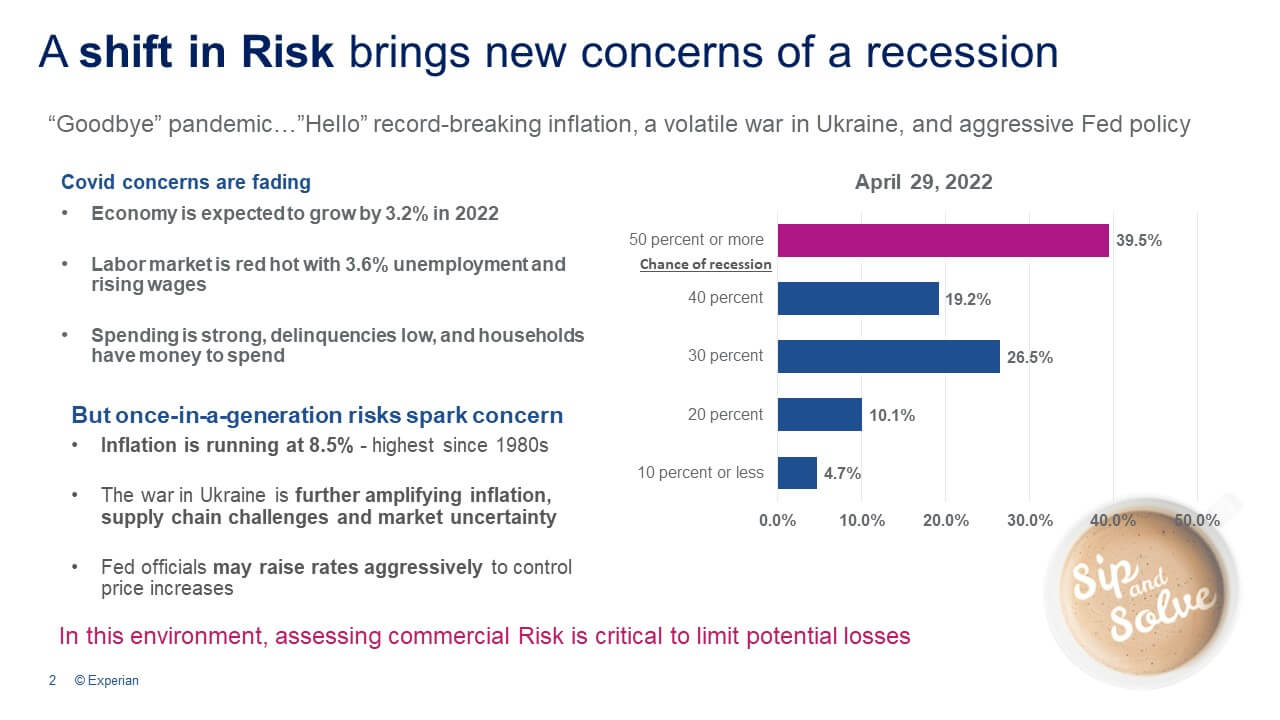
I think the challenge is identifying those risky accounts quickly and accurately. It would be best if you balanced your strategy to increase your sales and revenue but keeping risk low, keeping your DSO low and really making sure that you're not going to see any write-offs. So, how can you organize or filter your accounts to determine where the risk lies?
How is your score model performing? How do you even measure performance? Some of you may not even be able to see that information. For example, you approve something, you know, nine months ago. It's challenging to determine how that performed over time. Are you able to capture those bad accounts? Or, with some I've heard, maybe you're being too conservative.
Maybe you tightened your credit policy during the COVID pandemic and never loosened it back up. As a result, you're missing some opportunities to increase your revenue. So how can you improve your model performance while increasing your team's efficiency?
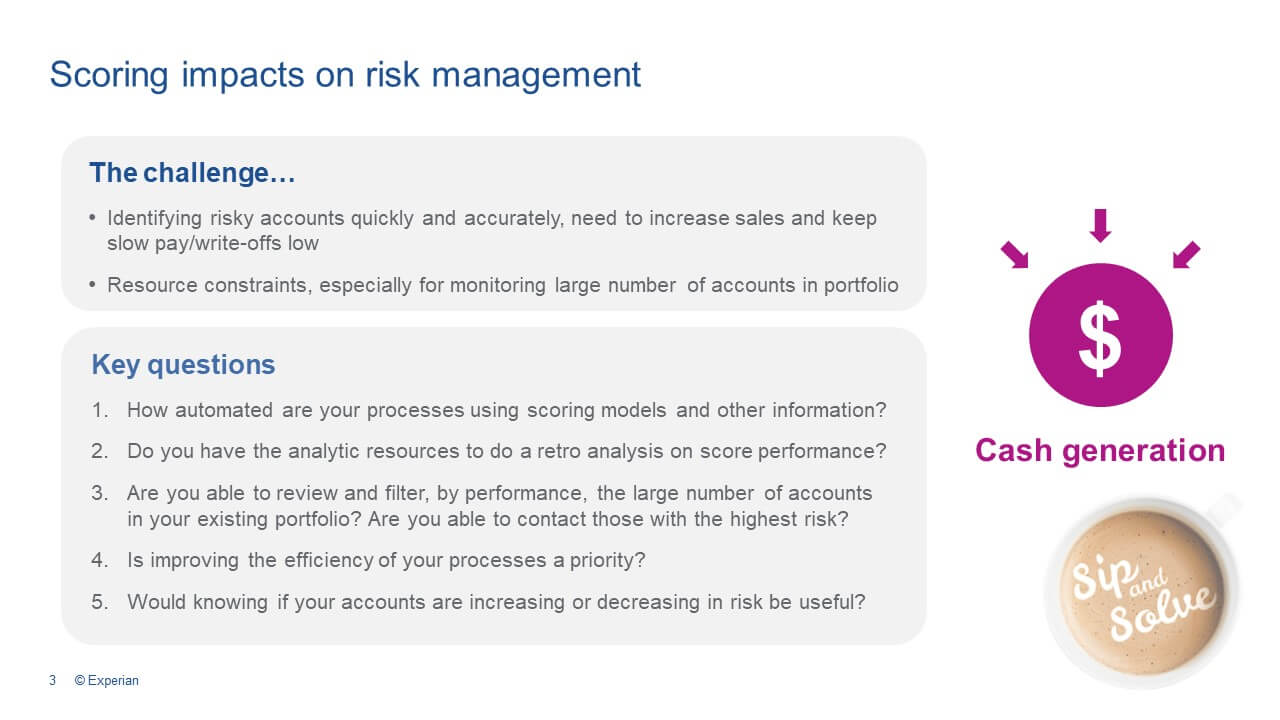
In these kinds of situations, model validation comes in very handy. Is your score model performing appropriately? Is it providing you with the right balance between risk mitigation and revenue growth?
Basically, it is to retro score accounts that you onboarded, maybe over the past 12 months.
So look at those accounts when you onboarded them and then measure them against what they look like today and how they performed for you. When you started with them, had you been using specific score models? Would you be able to have anticipated that you would see some issues either with slow payment or perhaps even a company going out of business?
So, this is an excellent way, mainly where a lot of changes occur within the economy, to compare different models or to ensure that your model is performing the way you want it to. It's really fairly simple to do.
You need to provide a name, address, city, state and zip code so that Experian can establish a match. Then you are going to provide the open date, what you extended to that customer, and then really importantly, how that customer performed for you. Experian can then do a score model validation for you to determine where you may be able to improve in terms of your policies and strategies.
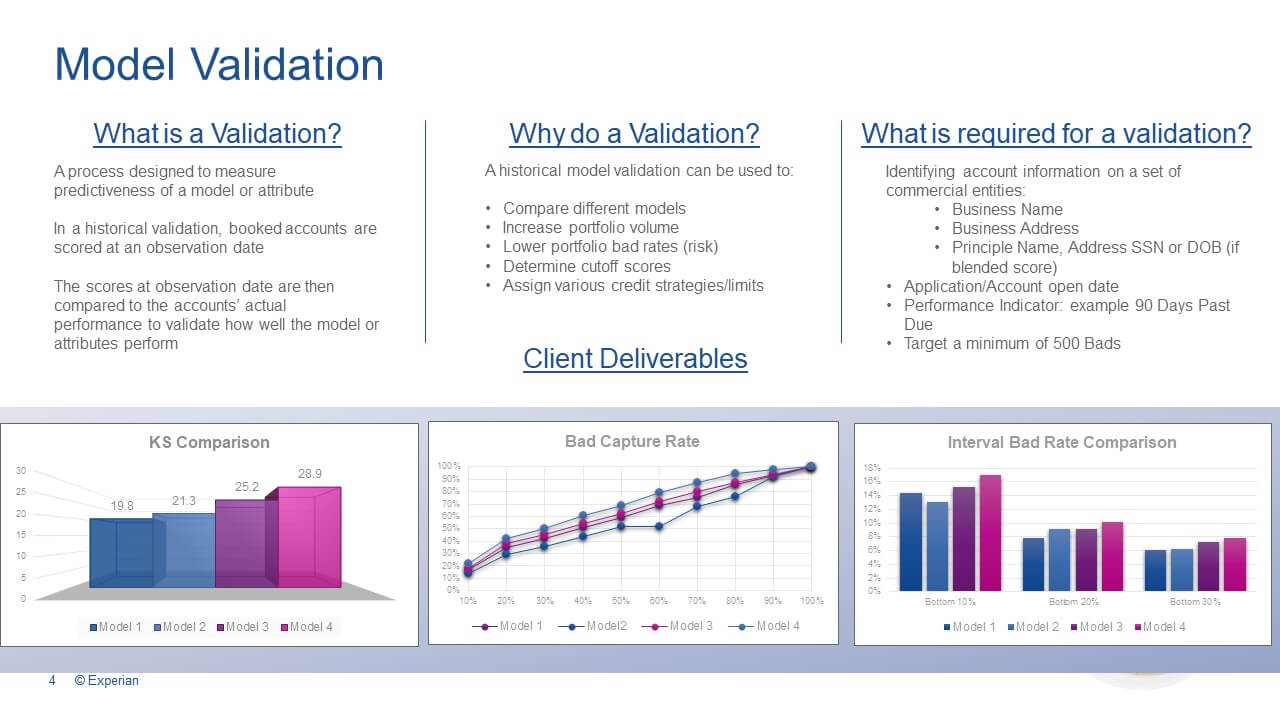
So what are the scores that Experian is currently recommending? We have our IntelliScore and our Financial Stability Risk Score. Both of these models have recently been updated to capture new attributes and to take into account some of the things that are occurring within the economy today.
So the IntelliScore measures the likelihood of severe delinquency. It tells you whether you are going to be paid on time.
The Financial Stability Risk Score measures the risk of bankruptcy or complete business closure. Am I going to be paid at all?
So these new machine-learned models have seen a nice uptick in performance. The score range is larger. Now it's from 350 to 800 instead of our traditional 1 to 100. We're also looking at a more extended performance period, 24 months from the previous 12 months. So, this is an excellent model to begin using because we're really going to be able to increase predictive performance.
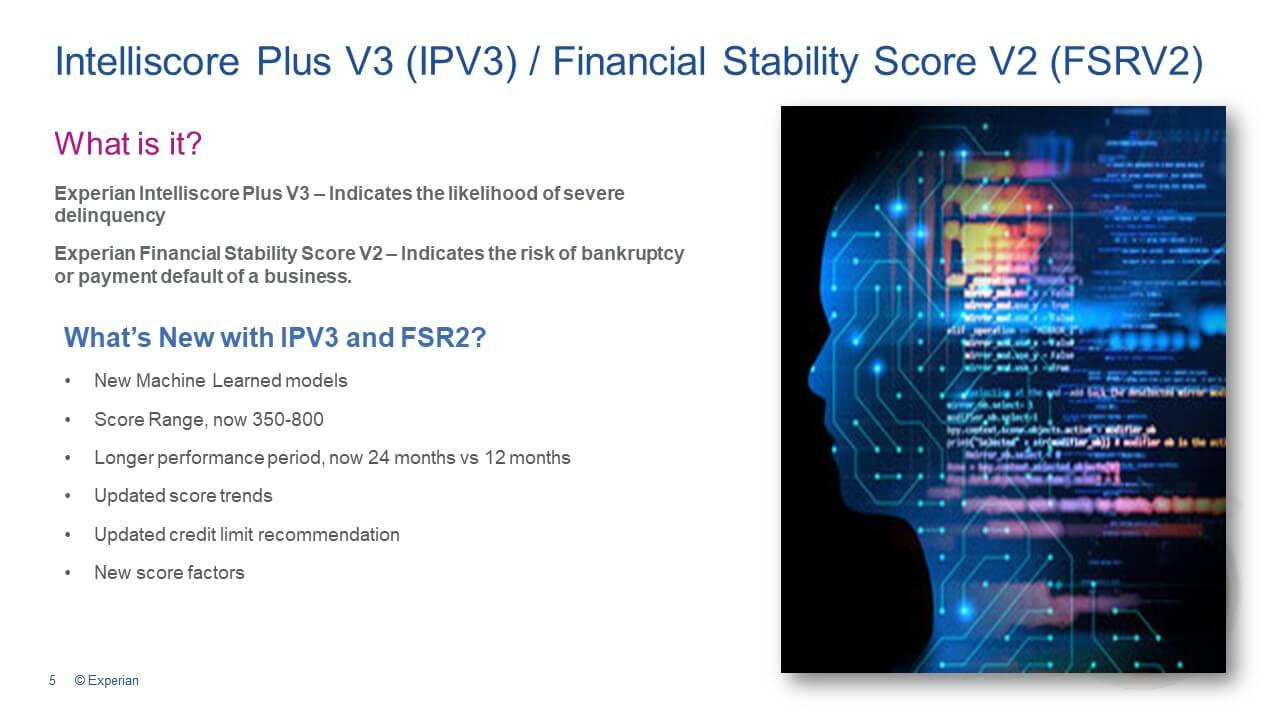
These scores allow you to identify your highest risk accounts very clearly and very consistently.
It gives you an overall view of your portfolio and allows your team to segment by risk to determine treatment strategies going forward. As you'll see, we've moved the score range from 300 to 850, and again, it looks out over a 24-month period as opposed to 12 months. Also, the model's machine-learned aspect has significantly improved the performance.
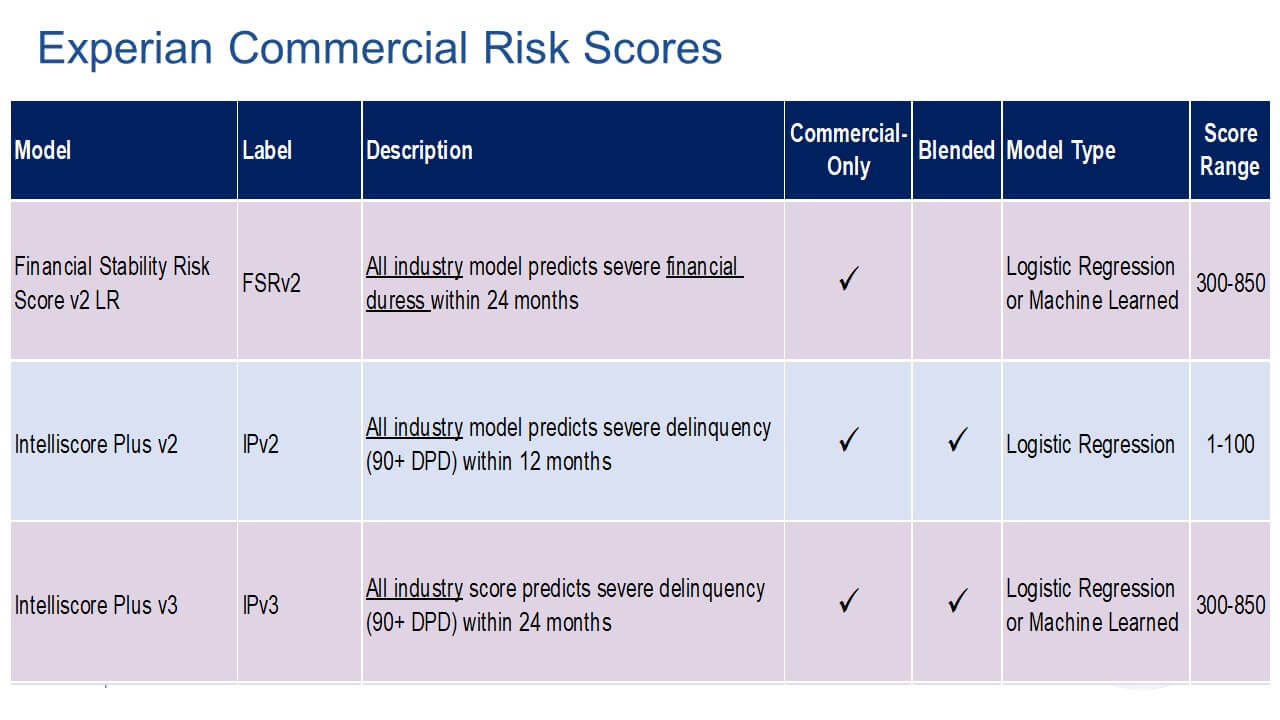
So what are the market problems that we're trying to address here? With these scores, it can do several things for your portfolio management. First of all, reduce risk. It will allow you to clearly identify the segment of accounts at the highest risk for your team to focus on and take different strategies on. You're also going to be able to accelerate your onboarding decisions. Finally, you can set policy with these scores, what thresholds, you know, does your customer meet, whether or not you're going to approve them automatically decline them, or some of them may be considered that gray area. So you may want to assign those to the analyst team, but that's where you'll see those efficiencies because your team will be able to focus only on those gray area accounts. You can use this to review your portfolio as well. And this is what we're focusing on today — that large number of accounts that are currently existing in your portfolio. How can you identify the risk there? It's really important, especially with this changing economy, to address those very quickly. And these scores are going to help you identify those.
You can improve collections similarly by identifying those with the highest risk. Then, you can focus your team on those accounts and identify opportunities. So make sure that as scores improve, you can expand relationships and increase revenue with specific clients.
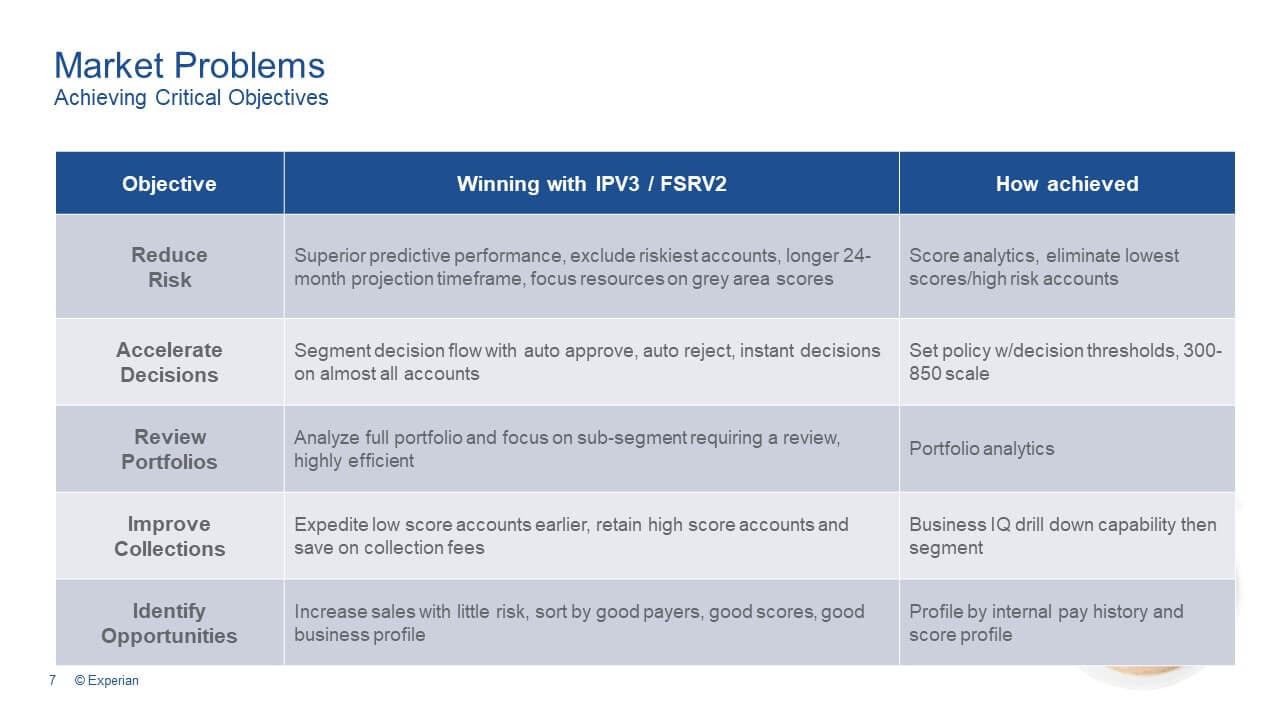
Looking at that portfolio scoring, you know, when you onboarded an account, perhaps it met a certain threshold, and you could approve them. However, you need to monitor the account continuously over time to ensure it meets the appropriate thresholds. So it could be they were paying you well, maybe they're paying you well today, but they're paying someone else slowly. Or perhaps some judgments, liens, or collections have been placed with that particular customer. It would help if you rescored to know where that risk lies. So even if they're paying you, there could be some risk creeping in with other vendors or other public records that you're not aware of.
So if you're segmenting the portfolio this way, you're going to be able to see. Where that risk lies and determine how to treat it.
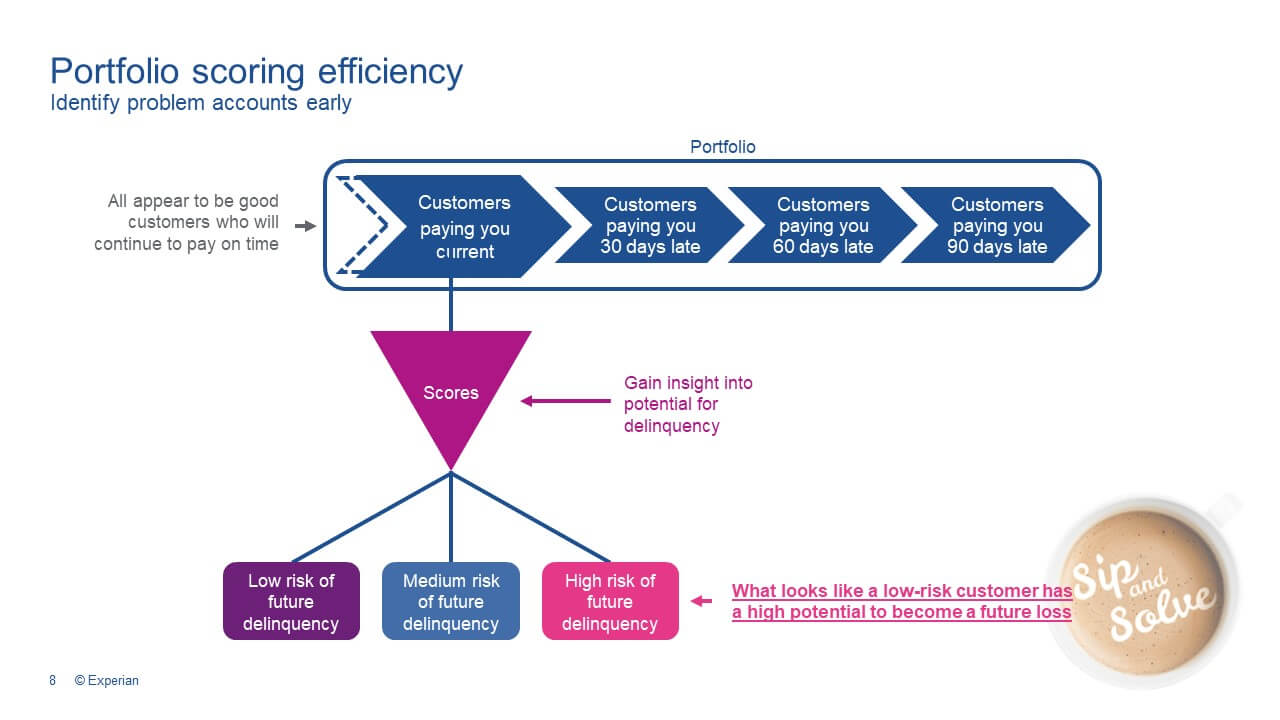
The below slide gives you a view of what that might look like.
This is a particular account where we took the entire portfolio and scored the IntelliScore. You'll recall which is the "am I going to be paid on time?" score that's on the left-hand side and the Financial Stability Risk Score. That is, am I going to be paid at all? That's on the right-hand side.
At the bottom of your screen, it's looking at both scores together. And this is where the value is looking at that bottom left quadrant. So it's identifying all of the accounts within this portfolio at the highest risk. So those have very low scores for the IntelliScore and the financial stability score, which are the highest risk accounts. So we really want to focus on those, have the team focus on those accounts, to begin collection efforts.

Account monitoring (Alerts) is a service available to you through Experian to assist you in identifying events occurring within your customer accounts. Are there late payments occurring? Are there bankruptcies I should be aware of? Lean judgment placements, collection filings? These are items that will be indicative of risk, which you may want to be aware of. You can set thresholds for these as well. So maybe I only want to see collection filings over $5,000.
You can do that. But it is best not to inundate your team with alerts. You want them to be aware of the significant events. Experian can work closely with you to ensure that your alert program meets your expectations.
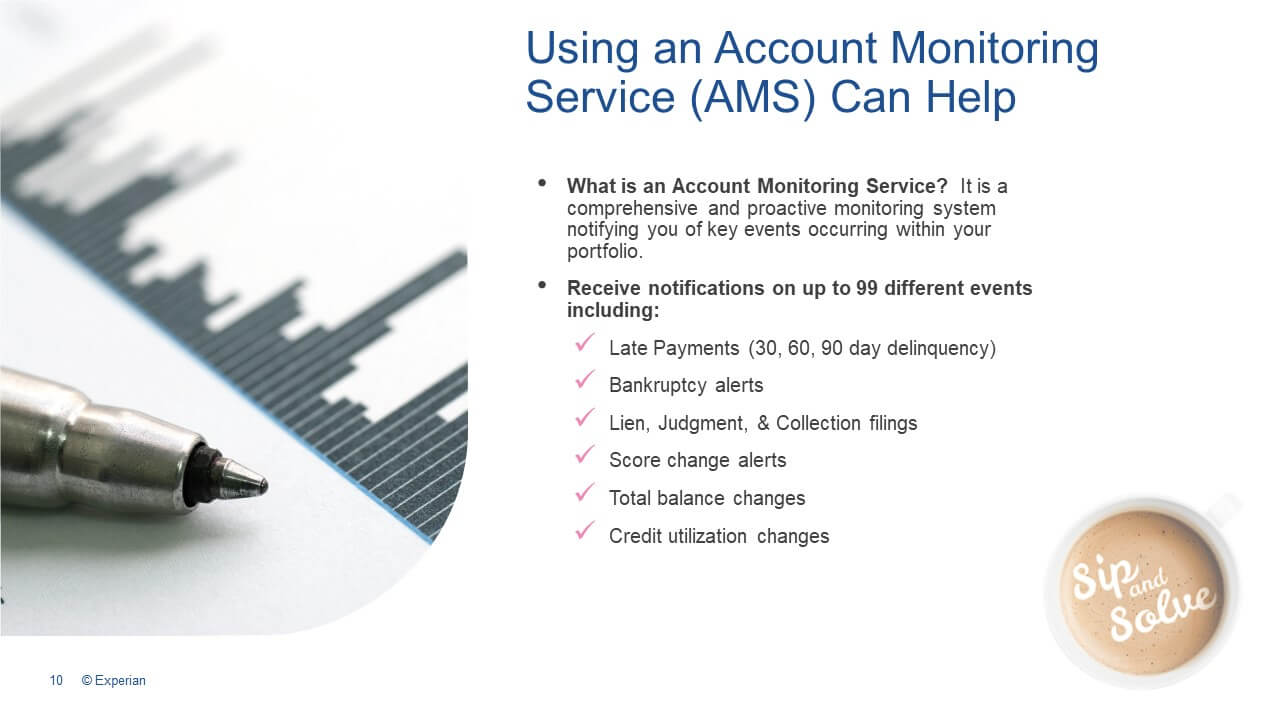
These are just a list of some of the alerts that can be available. There are certainly many more, and we can work closely with you to ensure you got the right set. We also recommend that you have an action plan for each alert type so that your team knows what to do when they receive that alert.
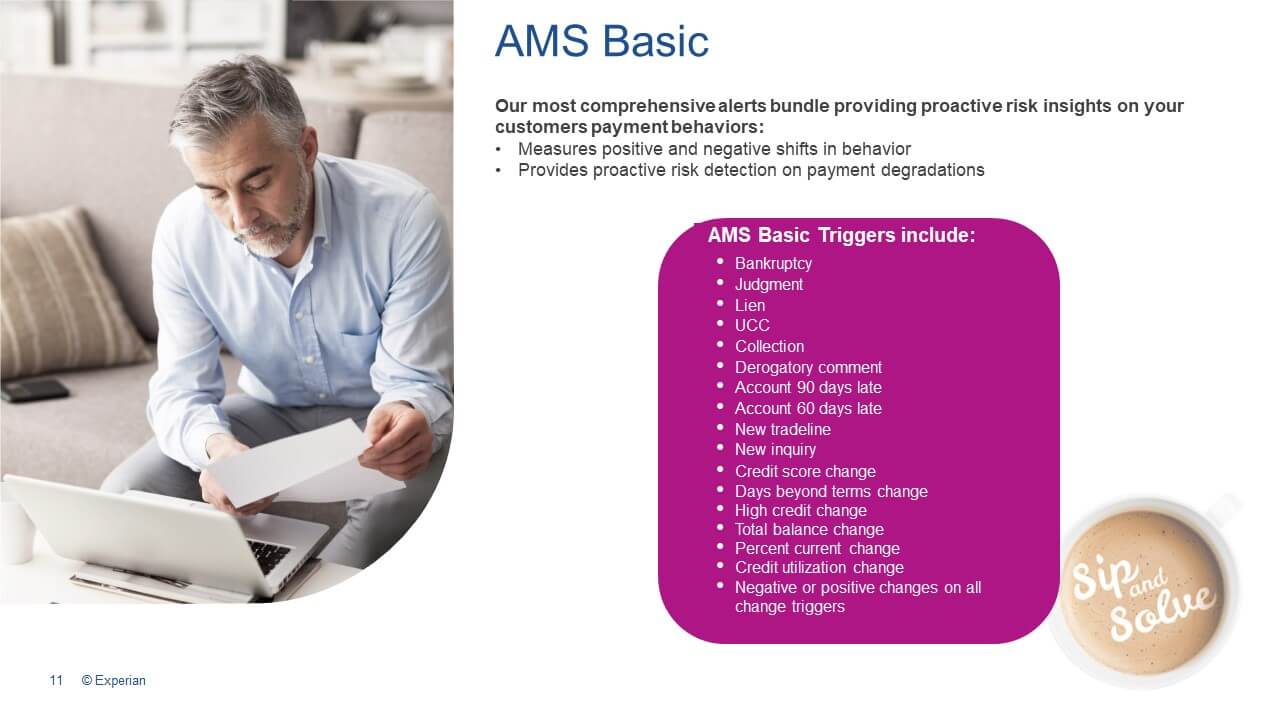
We can also analyze your portfolio and your customer segment, which alert triggers are the most predictive of risk. So you can look for early warning signs of some credit deterioration over time and ensure that you are receiving the correct alerts most appropriate for your portfolio.
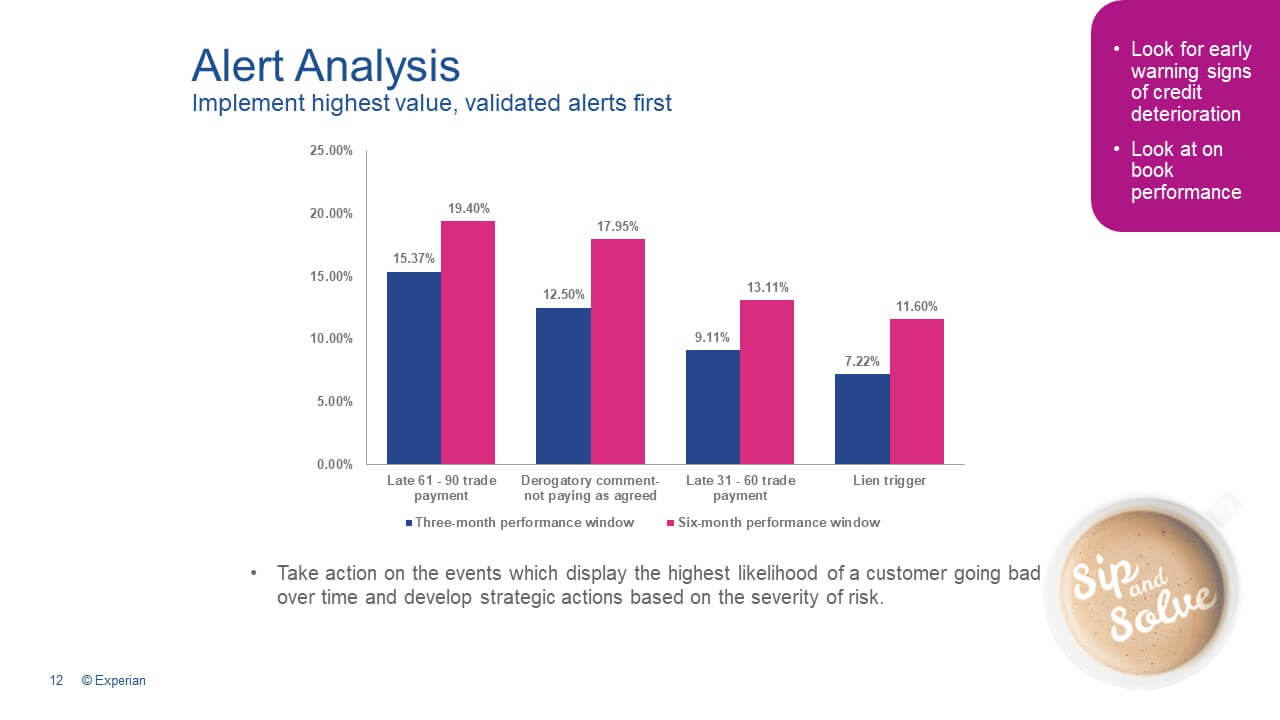
Download our excellent white paper on this topic titled "Rekindling Success — Uncovering your portfolio's hidden potential using advanced triggers to prevent risk."
1) Think about validating that scoring model, and make sure that you are ready for a quickly changing economy.
2) Use that portfolio management tool to reduce your risk of nonpayment by identifying your highest-risk accounts.
3) Be proactive in your account management by using alerts, and triggers appropriate for your portfolio.

Bonnie leads Solutions Consulting for Business Information Services. Her team works with sales to fully understand the client and prospect processes, exposing potential pain points, and assisting the teams in building a plan of products and services to address client needs.
Bonnie brings a deep background in the credit industry, having served as Chief Credit Officer and Vice President, Client Solutions for Credit2B, an Experian partner. She has experience in product management, customer support and onboarding, and commercial lending and has been a featured speaker at numerous industry events.